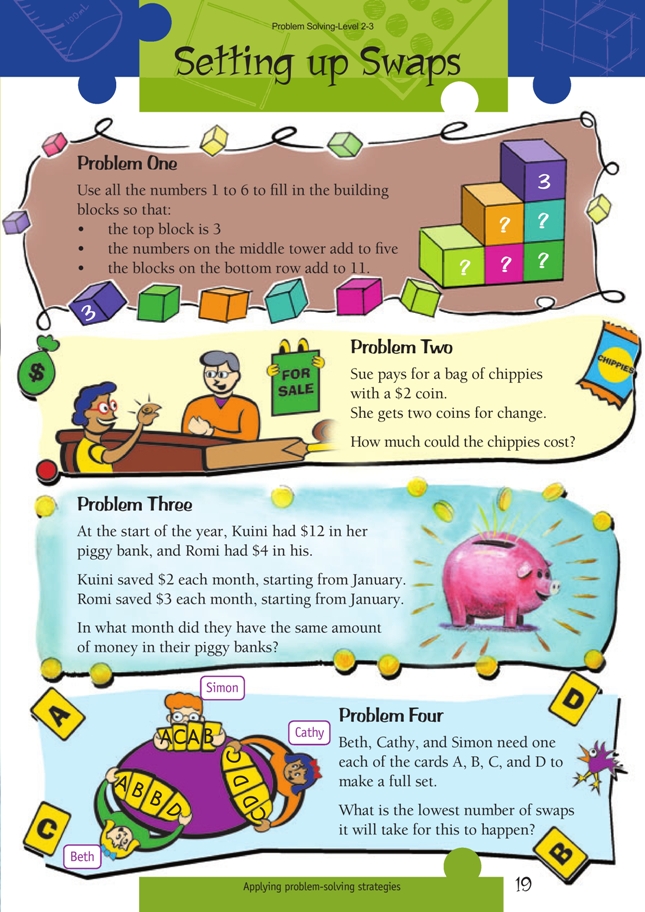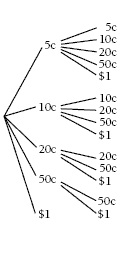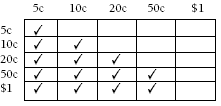These are level 2 number problems from the Figure It Out series.
A PDF of the student activity is included.
Click on the image to enlarge it. Click again to close. Download PDF (279 KB)
use addition facts to solve problems (Problems 1 and 2)
skip cound in 2s and 3s (Problem 3)
Problem One
It is easy for students to draw a model of the problem using cards with the numerals 1 to 6, which they can then use to try out different possible solutions.
Taking account of the clues will limit the possibilities and make the problem quicker to solve.
The top block is 3:
The middle tower numbers add to 5:
Students cannot make 10 with the remaining numbers if they arrange the middle tower like this:
The bottom blocks add to 11:
Students may enjoy making up their own problems with these digits.
Problem Two
The first step is to work out which amounts of change are possible with two coins.
A table or tree diagram showing the change would be useful:
So the following amounts could be given as change:
10c, 15c, 20c, 25c, 30c, 40c, 55c, 60c, 70c, $1, $1.05, $1.10, $1.20, or $1.50, in which case the article could cost $1.90, $1.85, $1.80, $1.75, $1.70, $1.60, $1.45, $1.40, $1.30, $1, 95c, 90c, 80c, or 50c respectively.
You could discuss with students which of these amounts the chippies are more likely to cost.
Problem Three
A table is a good way to keep track of the amount that each person had saved:
Students can quickly calculate each person’s saving by using the constant function on a calculator.
Kuini 12 + 2 = = = … (12 times)
Romi 4 + 3 = = = … (12 times)
(On some calculators, you have to press + twice to make the constant function work.)
As an extension, ask students “What would have happened if Romi had saved only $2 per month? Would the amounts in their piggy banks ever have been the same?”
Problem Four
Students can act out the problem by making up three sets of A, B, C, D cards. A good place to start is with the cards that are not wanted in each player’s hand. These cards are Simon (A), Cathy (C and D), and Beth (B). The players need to make two swaps to get the cards they need:
Simon (A) ↔ (D) Cathy, and Beth (B) ↔ (C) Cathy.
Students might investigate more complex swap situations, such as:
AAAB CCCB DDDB
Beth Cathy Simon
or where there are five cards in a set:
AAAEE CCCBB DDDEE
Beth Cathy Simon
Answers to Problems
1.
2. $1.90, $1.85, $1.80, $1.75, $1.70, $1.60, $1.45,
$1.40, $1.30, $1, 95c, 90c, 80c, or 50c
3. August
4. 2









